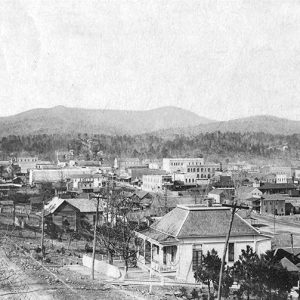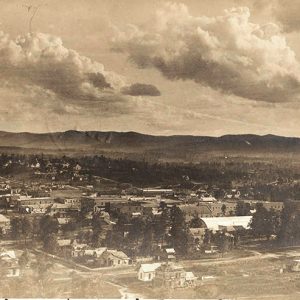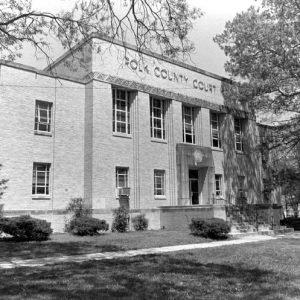calsfoundation@cals.org
Mena (Polk County)
County Seat
| Latitude and Longitude: | 34º35’10″N 094º14’22″W |
| Elevation: | 1,200 feet |
| Area: | 6.89 square miles (2020 Census) |
| Population: | 5,589 (2020 Census) |
| Incorporation Date: | September 18, 1896 |
Historical Population as per the U.S. Census:
|
1810 |
1820 |
1830 |
1840 |
1850 |
1860 |
1870 |
1880 |
1890 |
1900 |
|
– |
– |
– |
– |
– |
– |
– |
– |
– |
3,423 |
|
1910 |
1920 |
1930 |
1940 |
1950 |
1960 |
1970 |
1980 |
1990 |
2000 |
|
3,953 |
3,441 |
3,118 |
3,510 |
4,445 |
4,388 |
4,530 |
5,154 |
5,475 |
5,637 |
|
2010 |
2020 |
|
|
|
|
|
|
|
|
|
5,737 |
5,589 |
|
|
|
|
|
|
|
Mena was founded in the late nineteenth century as a railroad town in western Arkansas. Situated amid the Ouachita National Forest and surrounded by noteworthy state parks and trails, the city is now something of a tourist destination, though it also has a diversified economy based upon agriculture and manufacturing.
Post Reconstruction through the Gilded Age
Mena was one of many towns founded along the route of Arthur E. Stilwell’s Kansas City, Pittsburg & Gulf Railroad (later the Kansas City Southern), stretching from Kansas City, Missouri, to Port Arthur, Texas. The town of Mena takes its name from the nickname of Folmina Margaretha Janssen deGeoijen, the wife of one of Stilwell’s financiers (Janssen Park is also named after her). The first train pulled into Mena on August 19, 1896, the same day the New Era published its first edition. Mena was incorporated the following month. The Bank of Mena opened its doors on May 5, 1897, and the county seat was moved from Dallas to Mena in 1898. By 1900, the city’s population was 3,423. The new city readily advertised itself both as a spa city situated in a healthy environment and as a center for agriculture and extractive industries such as timber and mineral resources.
Early Twentieth Century
In 1906, Stilwell donated four city blocks of land, containing a log cabin reportedly built in 1851, for a park named Janssen Park. He also donated land for a campground called Stilwell Park, though this was later built over. In 1910, the railroad moved its division shops from Mena to Heavner, Oklahoma. More than 800 jobs were lost in the transfer. In 1905, Hendrix Academy, a private school, also closed. On April 13, 1911, Mena was struck by a tornado.
Despite attempts in 1897 and 1898 to chase African Americans from the Mena area, a small black community dubbed Little Africa arose just east of Mena on Board Camp Creek. On February 20, 1901, Peter “Nigger Pete” Berryman was lynched, and numerous other instances of racially motivated harassment occurred through the years in Mena. This, combined with changing job prospects with the relocation of railroad division shops, apparently convinced many African Americans to leave the area, and Mena slowly became a “sundown town.” There were 152 black residents of Mena in 1900 but only sixteen in 1910. By 1920, the black population for the entirety of Polk County had fallen to just nine, and the March 18, 1920, edition of the Mena Star proudly advertised the small city as “100% white.” In 1922, a local chapter of the Ku Klux Klan was organized in Mena, with between 2,500 and 4,000 citizens turning out to hear state kleagle D. E. Rhodes speak at the local ballpark on the principles of the Klan.
In December 1924, Commonwealth College, an institution based upon radical labor education, moved from nearby Ink (Polk County) to Mena; a few months later, it settled into a permanent home just west of the city. By the end of 1940, however, the college—which had long been riven by internal divisions and been the object of suspicion by local, state, and federal officials—closed.
World War II through the Faubus Era
In the 1950s, a group of Mena investors purchased the site of what was once the Wilhelmina Inn, a lodge built on Rich Mountain in the 1890s but which proved an unsuccessful venture, the building closing in 1910 and falling into disrepair. In 1957, Queen Wilhelmina State Park was established on this site, and a new lodge opened to the public in 1963.
Mena Intermountain Municipal Airport was constructed in 1946 by the U.S. government to serve as an auxiliary airfield. In 1959, the Mena City Council commenced actions to improve the airport, lengthening its runway to 5,000 feet so that it could handle larger planes.
Though the population of Polk County as a whole dropped in the 1940s and 1950s as people sought work elsewhere, Mena actually gained in population. Mandates for school desegregation did not affect Mena. By the 1960 census, not a single African American resided in the entire county. (The 2020 census found the Black population to be 0.4%.)
In the 1950s, local manganese mines that had closed in the 1890s were reopened under a government program to stockpile the mineral. However, that program ended in 1959, and the mines closed once again.
Modern Era
In 1975, Rich Mountain Vocational-Technical School in Mena held its first classes. In 1983, the state legislature merged the school with a Mena-based off-campus program run by Henderson State University to create Rich Mountain Community College, a two-year school, the service area of which now encompasses four counties in Arkansas and one in Oklahoma. In 2017, the school became University of Arkansas Rich Mountain.
Mena attracted a great deal of national and international attention in the 1980s and 1990s due to its role in an immense drug-smuggling operation and the Iran-Contra Scandal. In 1982, pilot Adler Berriman “Barry” Seal, who had been flying drugs from Central America to Louisiana, moved his base of operations to Mena after the Louisiana State Police began closely investigating him. That same year, Central Intelligence Agency (CIA) director William Casey began “Black Eagle,” a scheme to provide arms to the right-wing Contras in Nicaragua. After turning informant for the government, Seal began flying missions from the Mena Intermountain Municipal Airport as part of President Ronald Reagan’s support of the Contras while simultaneously continuing his smuggling operations, reportedly transporting guns to Nicaragua and returning to Mena with cocaine. Local law enforcement officials later claimed that their efforts to prosecute crimes in Mena were frustrated by the federal government. In 1988, the White House blocked an investigation into the activities at the Mena airport, but on November 8, 1996, the CIA acknowledged running “a joint training operation with another federal agency” at the airport.
On the evening of April 9, 2009, a tornado touched down in Polk County and traveled from near the town of Potter to the vicinity of Ink, crossing Mena in the process and killing three residents. Nearly half of the city was damaged by the storm.
Industry
Agriculture constituted the earliest economic activity in the area, with farmers growing cotton and other crops, but, in the modern era, the poultry industry has surpassed other agricultural ventures. Some mining was carried out in the late nineteenth century, most notably for manganese.
Mena has an eighty-acre industrial park located near the Mena Intermountain Municipal Airport. The park is home to R&D, which manufactures various plastic parts, as well as a number of companies involved in the refurbishing of airplanes. U.S. Electrical Motors, Sterling Machinery, Brodix, Inc., Street & Performance, Hatfield Lumber Company, Lewis Lumber Company, and Smith Pallet Company are also located in the city. The area is known for its Arabian horse breeding farms, as well as Proud Spirit Horse Sanctuary. Mena Regional Health System, a sixty-five-bed hospital, serves western Arkansas and eastern Oklahoma.
Attractions
Mena is mostly surrounded by the Ouachita National Forest, which provides numerous recreational opportunities; the Ouachita Trail runs just north of the city. Queen Wilhelmina State Park lies to the northwest of Mena. Part of the National Scenic Byway system, Talimena Scenic Drive (Highway 88 in Arkansas) runs through the Ouachita National Forest from Talimena State Park in Oklahoma to Mena. There are several properties on the National Register of Historic Places located in the city, including the Bard Springs Bathhouse and the Shady Lake Bathhouse, both constructed by the Civilian Conservation Corps; Janssen Park; the Ebenezer Monument; the Mena National Guard Armory; and St. Agnes Catholic Church. The Ouachita Little Theater, a non-profit organization, has conducted theatrical performances and workshops in the community since 1979. The Skyline Cafe is one of the state’s oldest restaurants, starting business in the early 1920s.
County courthouses were built in 1850, 1869, 1883, 1899, and 1939; the first three were in Dallas, and the more recent two were in Mena, with the current one listed on the National Register of Historic Places.
Notable Figures
Paul Tyrone Lewis was a noted painter of landscapes. Mary Victor Mayfield practiced medicine as a man and made headlines when discovered to be biologically female. T. Texas Tyler performed country and western music. Herbert Littleton was awarded a Medal of Honor for valor during the Korean War.
For additional information:
City of Mena. http://cityofmena.org/ (accessed June 13, 2023).
Lancaster, Guy. “‘There Are Not Many Negroes Here’: African Americans in Polk County, Arkansas, 1896–1937.” Arkansas Historical Quarterly 70 (Winter 2011): 429–449.
Mena Centennial History, 1896–1996: A Photographic History of the City of Mena, Arkansas. Murfreesboro, AR: Looking Glass Press, 1996.
Vail, Roy. Mena and the Queen Wilhelmina Inn, a Brief History. Mena, AR: Desert Biological Publications, 1995.
Williams, Troy, and Leon Toon, eds. History of Polk County. Dallas: Curtis Media Corp., 1988.
Staff of the CALS Encyclopedia of Arkansas
 Horner, Elijah Whitt
Horner, Elijah Whitt 71 Restaurant
71 Restaurant  Antlers Hotel
Antlers Hotel  Commonwealth College
Commonwealth College  Emma Dusenbury
Emma Dusenbury  Ebenezer Monument
Ebenezer Monument  First National Bank
First National Bank  Norris Goff
Norris Goff  Lum and Abner
Lum and Abner  Victor Mayfield Story Ad
Victor Mayfield Story Ad  Mary Victor (M. V.) Mayfield
Mary Victor (M. V.) Mayfield  Mena
Mena  Mena Star Employees
Mena Star Employees  Mena Depot
Mena Depot  Mena Lynching
Mena Lynching  Mena Meat Market
Mena Meat Market  Mena Parade
Mena Parade  Mena Scene
Mena Scene  Mena Star
Mena Star  Mena Street Scene
Mena Street Scene  Mena Street Scene
Mena Street Scene  Mena Street Scene
Mena Street Scene  Mena Tornado
Mena Tornado  Mena View
Mena View  Polk County Courthouse
Polk County Courthouse  Polk County Map
Polk County Map  Queen Wilhelmina Lodge
Queen Wilhelmina Lodge  Dorothy Shaver
Dorothy Shaver  Skyline Cafe
Skyline Cafe  Sundown Town Flyer
Sundown Town Flyer  T. Texas Tyler Tree
T. Texas Tyler Tree  UA Rich Mountain
UA Rich Mountain 




Comments
No comments on this entry yet.